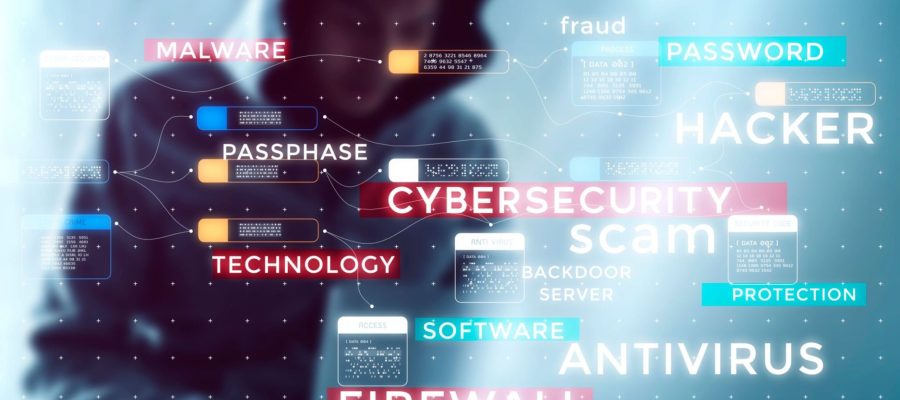
Cyber Security

What is a Cybersecurity Course?
A cybersecurity course offers a thorough foundation in protecting digital systems and data from cyber threats. It introduces key topics such as network security, encryption, threat detection, and incident response. Participants gain hands-on experience in identifying vulnerabilities, applying security strategies, and managing cyber incidents. This course prepares individuals to defend digital assets and implement strong security practices in today’s connected world.
Cybersecurity and Ethical Hacking
Step into the exciting field of Cybersecurity and Ethical Hacking with Divine Tech Skills, where each lesson brings you closer to digital expertise. Experience practical labs, real-world simulations, and immersive challenges that reflect the constantly shifting cybersecurity landscape.
Our all-in-one Ethical Hacking Course delivers hands-on training in core areas such as:
- Network Security
- Cloud Security
- Ethical Hacking Techniques
- Penetration Testing
- Web Application Security
- Mobile App Security
- Exploitation Techniques & Countermeasures
Gain the skills needed to detect, prevent, and mitigate cybersecurity threats effectively.
Firewall and Perimeter Security
The Firewall and Perimeter Security Mastery course at Divine Tech Skills provides essential knowledge to fortify your organization’s network perimeter. Learn the fundamentals of firewall technologies and perimeter defense strategies that protect against external cyber attacks.
This course explores different types of firewalls (hardware and software), their applications, and advanced configuration techniques. Topics include:
- Intrusion Prevention Systems (IPS)
- Access Control Principles
- Real-world Firewall Configuration Scenarios
- Best Practices for Perimeter Defense
Equip yourself with the tools to design and maintain robust network security infrastructures.
Introduction to Cybersecurity
Definition & Importance:
Cybersecurity protects digital systems and data from unauthorized access and cyber threats.
Key Objectives:
- Confidentiality – Keeping data private
- Integrity – Ensuring data accuracy
- Availability – Keeping systems accessible
Threat Landscape:
- Common Threats: Malware, phishing, ransomware, etc.
- Attack Vectors: Ways hackers exploit vulnerabilities
- Real Cases: Notable global cyber attacks and their impact
Module 2: Networking Fundamentals
Networking Basics
- OSI & TCP/IP Models
- IP Addressing & Subnetting
- Key Protocols: HTTP, HTTPS, FTP, DNS, SMTP
- Network Devices: Routers, Switches, Firewalls, IDS/IPS
- Network Types: LAN, WAN, VPN & Topologies
Module 3: Securing Operating Systems
Windows Security
- Architecture overview
- Group Policy & User Account Control (UAC)
- Windows Defender & BitLocker
Linux Security
- Security architecture
- File permissions & SELinux
- Key tools: iptables, fail2ban
Module 4: Cryptography
- Encryption Types: Symmetric vs Asymmetric
- Key Management: Secure handling of encryption keys
- Algorithms: DES, AES, RSA, ECC
- Hashing & Signatures: MD5, SHA family, Digital Signatures
- Security Tools: PGP, Digital Certificates
Module 5: Security Policies and Procedures
- Security Governance:
Policies, standards, guidelines, and procedures. - Security Frameworks: ISO/IEC 27001, NIST.
- Risk Management:
Risk assessment, analysis, and mitigation strategies.
Module 6: Network Security
Firewalls and VPNs
- Firewall Types: Packet Filtering, Stateful, Proxy
- VPN Technologies: IPSec, SSL/TLS
Intrusion Detection and Prevention Systems
- IDS/IPS: Signature-based vs Anomaly-based Detection
Wireless Security
- WLAN Protocols: WEP, WPA, WPA2, WPA3
- Securing Wireless Networks
Module 7: Application Security
- Secure Coding Practices: Implement best practices to write safe and robust code.
- OWASP Top 10: Learn to protect against the most common web application vulnerabilities.
- Web Application Security: Safeguard web apps from threats like SQL Injection, XSS, and CSRF.
- Web Application Firewalls: Protect applications from malicious traffic.
- Mobile Security: Understand mobile OS security and test app security effectively.
Module 8: Threats and Vulnerabilities
Malware Analysis
- Types: Virus, Worm, Trojan, Ransomware
- Detection Techniques
Vulnerability Assessment & Penetration Testing
- Tools: Nmap, Metasploit, Nessus
- Methodologies & Frameworks
Incident Response
- Handling & Response Phases
- Forensic Analysis
Module 9: Cloud Security
Introduction to Cloud Computing
Cloud Service Models: IaaS, PaaS, SaaS
Public, Private, Hybrid
Cloud Security Challenges:
- Data Security
- Identity & Access Management
- Regulatory Compliance
- Securing Cloud Services
Best Practices & Tools: Key strategies and tools for effective cloud security.
Module 10: Cybersecurity Tools and Techniques
- SIEM Overview: Introduction to SIEM systems for real-time threat monitoring and incident management.
- Log Management & Analysis: Collect and analyze logs for detecting security events.
- Endpoint Security: Protect devices from threats.
1. Antivirus & Anti-malware: Solutions to prevent and remove malicious software.
2. EDR: Tools for detecting and responding to endpoint threats.
- Identity & Access Management (IAM): Secure authentication and authorization.
1. MFA: Multi-factor authentication for added security.
Module 10: Cybersecurity Tools and Techniques
- SIEM Overview: Introduction to SIEM systems for real-time threat monitoring and incident management.
- Log Management & Analysis: Collect and analyze logs for detecting security events.
- Endpoint Security: Protect devices from threats.
1. Antivirus & Anti-malware: Solutions to prevent and remove malicious software.
2. EDR: Tools for detecting and responding to endpoint threats.
- Identity & Access Management (IAM): Secure authentication and authorization.
1. MFA: Multi-factor authentication for added security.
Module 11: Cybersecurity Laws and Ethics
Cyber Laws and Regulations
- Data Protection Regulations: GDPR, CCPA
- Industry Standards & Compliance
- Ethical Hacking & Pen Testing Ethics
- Ethical Hacking Principles
- Legal Implications
Module 12: Final Project
Practical Cybersecurity Project
- Real-World Scenario
- Application of Concepts
- Presentation and Defense
- Hands-on training with real-world scenarios
- Mastery of core cybersecurity concepts and ethical hacking techniques
- In-depth knowledge of network, cloud, and mobile security
- Practical experience in penetration testing and vulnerability assessments
- Advanced training in firewall and perimeter security
- Access to industry-standard tools and techniques
- Focused learning on threat detection and incident response
- Certification to enhance career opportunities in cybersecurity

